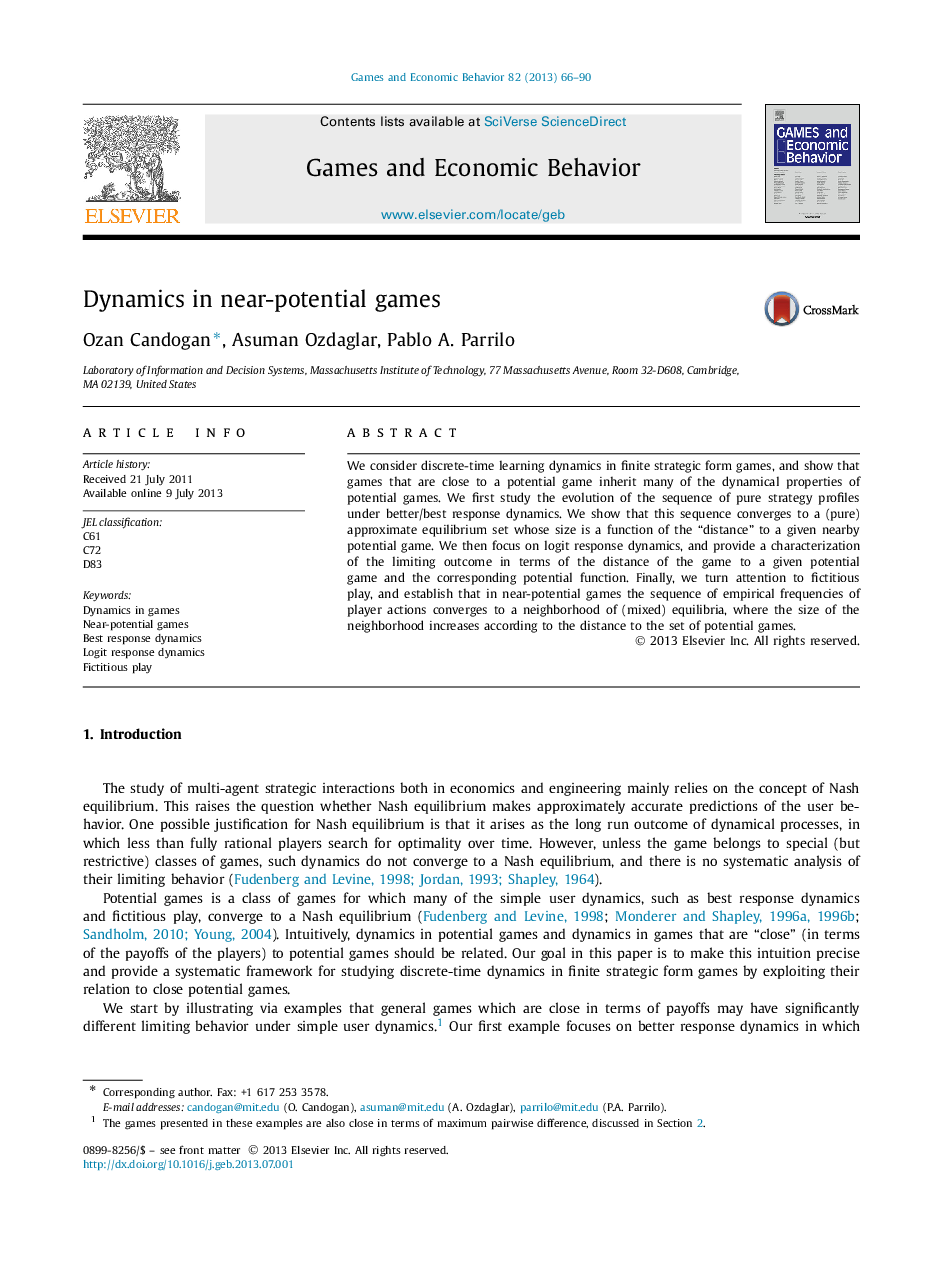| Article ID | Journal | Published Year | Pages | File Type |
|---|---|---|---|---|
| 5071759 | Games and Economic Behavior | 2013 | 25 Pages |
â¢Games that are close to potential games inherit the dynamical properties of potential games.â¢In such games better/best response dynamics converges to an approximate equilibrium set.â¢The empirical frequencies of fictitious play converge to a neighborhood of equilibria.â¢Stationary distribution of logit response is characterized by the potential of a close potential game.â¢These results provide a framework for studying dynamics in arbitrary finite games.
We consider discrete-time learning dynamics in finite strategic form games, and show that games that are close to a potential game inherit many of the dynamical properties of potential games. We first study the evolution of the sequence of pure strategy profiles under better/best response dynamics. We show that this sequence converges to a (pure) approximate equilibrium set whose size is a function of the “distance” to a given nearby potential game. We then focus on logit response dynamics, and provide a characterization of the limiting outcome in terms of the distance of the game to a given potential game and the corresponding potential function. Finally, we turn attention to fictitious play, and establish that in near-potential games the sequence of empirical frequencies of player actions converges to a neighborhood of (mixed) equilibria, where the size of the neighborhood increases according to the distance to the set of potential games.
